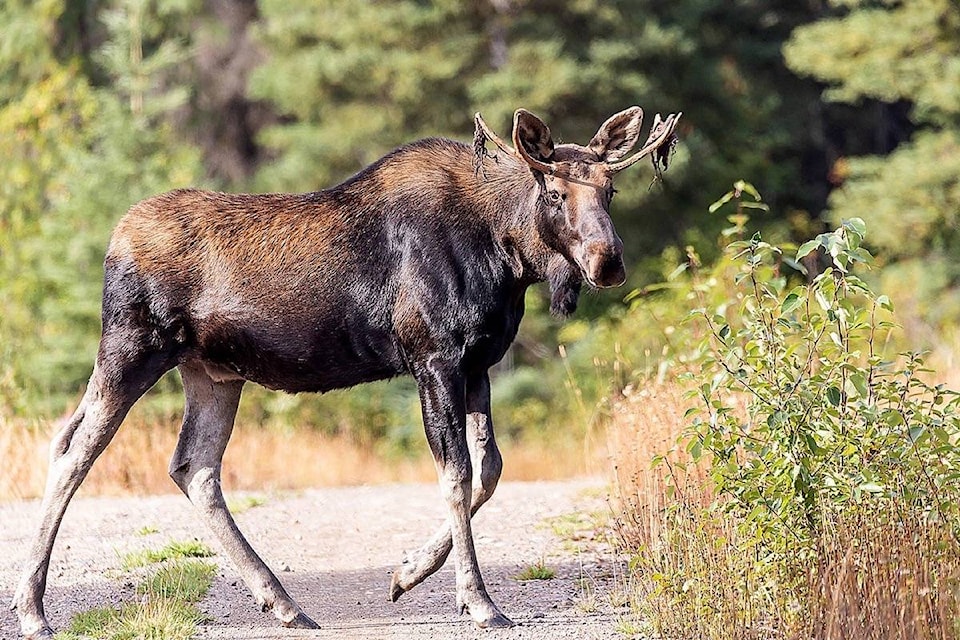The Burns Lake village council is taking steps to help increase moose populations across British Columbia.
The council agreed at its June 25 meeting to submit a resolution to the Union of BC Municipalities UBCM to be passed onto the provincial government calling for two actions on moose recovery.
The resolution was originally introduced to the council by councillor Charlie Rensby.
Its first action calls for a stop to the cow/calf moose Limited Entry Hunt (LEH), a system that authorizes hunting to resident hunters based on a lottery.
“The purpose of LEH is to achieve wildlife management objectives and maintain hunting opportunity. LEH seasons are introduced where it has become necessary to limit the number of hunters or limit the number, class or sex of animals that may be harvested,” according to the Ministry of Forests Lands, Natural Resource Operations and Rural Development (FLNRORD)’s Limited Entry Hunting Regulations Synopsis 2019-2020.
The village’s resolution stated that the synopsis sets higher numbers of hunts for cow/calf moose in Regions 4 and 7 of the province, with the former being the southeast Kootenay area, and the latter the northeast including the Omineca and Peace zones. Region 6 takes in the northwest chunk of the province, and includes Burns Lake and goes up to the Alaska and Yukon borders.
”Region 4/7 are currently under the caribou recovery microscope, and our region will be eventually,” Rensby told Lakes District News.
“Any form of cow/calf LEH season is high when there isn’t an over population issue.”
The cow/calf LEH increase “will put unnecessary pressure on already shrinking moose populations,” the resolution said.
The second action urges that the government conduct more intensive monitoring of moose populations across B.C. to more accurately determine populations and measure recoveries.
In the Burns Lake region the moose population has been relatively lower for some time, as hunters and the government have discovered. An FLNRORD study covering 2012-2018 found the moose population had fallen by 13 per cent. A Ministry spokesperson said that over the same period “there was a 25 per cent decline in the bull-to-cow ratio, and there was a 16 per cent decline in the calf-to-cow ratio.”
LOOK BACK: Overhunting cuts moose population, observers say
The village’s passing of the resolution was the second time in June that the subject of moose populations was raised in a public forum in Burns Lake.
On June 15, Nechako Lakes MLA John Rustad spoke at the Tweedsmuir Park Rod and Gun Club and criticized what he said is the province’s insufficient predator management program.
That lack of control is seeing populations of wolves and bears rise too high while ungulate numbers are too low.
READ MORE: Manage predators, bring back moose, MLA says
Blair McBride
Multimedia reporter
Send Blair an email
Like Lakes District News on Facebook
